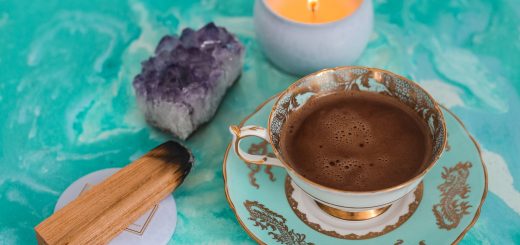Puja Practices for Inner Transformation

Before diving in, please note: This post is for informational purposes only. If you’d like to know more about how we approach topics, feel free to check out our friendly Disclaimer Page.
Hey there, amazing readers! 🖐️ Just a quick note: yes, we know there are a lot of ads here. Trust us, we get it—it’s not the prettiest look, but they help us keep this blog alive and kicking. Those pesky little ads cover the costs of all the behind-the-scenes magic, from hosting and tech stuff to creating content we hope you’ll love.
We’re committed to delivering quality posts, and your support (even just sticking around despite the ads) means everything to us. So, bear with us, and thanks for helping us keep the good vibes rolling. Now, on to the fun stuff! 😉
TRANSLATE BUTTON AT THE END OF THE ARTICLE
A Quick Overview
Puja, also known as worship or ritual ceremony, is a significant practice in Hinduism and other Eastern religions.
It is a way to connect with the divine, seek blessings, and cultivate inner transformation.
Puja involves various rituals, prayers, and offerings to deities or spiritual forces.
The process of performing Puja can vary based on traditions, beliefs, and personal preferences.
However, the underlying goal remains the same – to purify the mind, body, and soul, and to foster a deep sense of spiritual connection.
Understanding the Significance of Puja Practices
Puja practices hold immense significance in Hinduism and other spiritual traditions.
They are considered a means of expressing reverence, gratitude, and devotion to the divine.
Through Puja, individuals seek to establish a direct connection with the divine energies and invite their blessings into their lives.
Puja rituals are believed to purify the mind and heart, remove obstacles, and create a harmonious environment conducive to spiritual growth.
Setting the Intention for Inner Transformation
Before beginning a Puja ceremony, it is essential to set a clear intention for inner transformation.
This intention could be aimed at healing, self-improvement, or cultivating virtues such as love, compassion, and gratitude.
By consciously directing our focus towards positive change, we align ourselves with the transformative power of the ritual.
Setting intentions helps us stay focused during the Puja and increases the effectiveness of our spiritual practice.
Choosing the Right Time and Place for Puja
Selecting the right time and place for performing Puja is crucial for creating a conducive environment for spiritual practice.
Traditionally, early morning or evening is considered auspicious for Puja, as these times are believed to be spiritually charged.
Choose a quiet and clean space in your home where you can sit comfortably and focus on the rituals without distractions.
Creating a sacred atmosphere will enhance the energy flow during the Puja and deepen your connection with the divine.
Gathering the Necessary Puja Items
Before starting a Puja ceremony, it is important to gather the necessary items and offerings.
These may include incense sticks, flowers, fruits, sweets, water, oil lamps, and sacred ash or sandalwood paste.
Additionally, you may need a Puja plate, bell, conch shell, and deity idols or images.
Make sure to purify these items before use by sprinkling them with water and mentally invoking the divine presence.
Having all the required items ready beforehand will ensure a smooth and uninterrupted Puja experience.
Creating a Sacred Space for Puja
Creating a sacred space for Puja is essential for invoking the divine energies and fostering a spiritual atmosphere.
Begin by cleaning the Puja area and arranging the necessary items neatly.
Place a clean cloth or mat on the altar where you will perform the rituals.
Decorate the space with flowers, candles, and other auspicious items to create a serene and inviting ambiance.
Lighting incense sticks and playing soft music can further enhance the sacredness of the space and prepare you for the Puja.
Performing Puja Rituals with Devotion
The key to a meaningful Puja practice lies in performing the rituals with utmost devotion and sincerity.
Approach the ceremony with a humble and reverent attitude, focusing on the divine presence before you.
Follow the prescribed rituals step by step, offering each item with love and gratitude.
Maintain a meditative state of mind throughout the Puja, concentrating on the deity or spiritual force being worshipped.
Understand the Powerful Law of Karma and Its Impact – Explore Here!
By immersing yourself completely in the rituals, you can experience a deep sense of connection and transformation.
Chanting Mantras for Inner Peace
Chanting mantras is an integral part of Puja practices, as it helps in purifying the mind and invoking divine blessings.
Mantras are sacred sounds or phrases that carry spiritual vibrations and power.
By reciting mantras with devotion and concentration, one can experience inner peace, clarity, and spiritual upliftment.
Choose a mantra that resonates with your intentions and beliefs, and chant it during the Puja to deepen your spiritual connection and experience a profound transformation within.
Connecting with Deities through Puja
Puja is a powerful way to connect with deities and spiritual beings, seeking their guidance, blessings, and protection.
Each deity represents a specific aspect of the divine consciousness, such as love, wisdom, or abundance.
By invoking and worshipping these deities with sincerity and devotion, one can develop a personal relationship with them and receive their grace.
Through Puja, one can align oneself with the divine qualities embodied by the deities and cultivate those virtues within themselves.
Offering Prayers and Gratitude
During a Puja ceremony, it is important to offer prayers and express gratitude towards the divine for their blessings and presence in your life.
Prayers are a way to communicate with the divine, seeking their guidance and blessings for yourself and others.
Expressing gratitude fosters a sense of humility and appreciation for the blessings you have received.
By offering heartfelt prayers and gratitude during Puja, you open yourself up to receive divine grace and experience inner transformation.
Reflecting on the Experience of Puja
After completing a Puja ceremony, take some time to reflect on the experience and its impact on your inner being.
Notice any changes in your thoughts, emotions, or energy levels after the Puja.
Reflect on the intention you set at the beginning of the ceremony and how it has manifested or transformed during the ritual.
Pay attention to any insights or messages you may have received during the Puja and contemplate on how you can integrate them into your daily life for continued growth and transformation.
Integrating Puja Practices into Daily Life
To reap the full benefits of Puja practices, it is important to integrate them into your daily life.
Establish a regular Puja routine that fits your schedule and commitments, whether it is a daily morning ritual or a weekly ceremony.
Make Puja a sacred part of your day, dedicating time and space for connecting with the divine and nurturing your spiritual growth.
By incorporating Puja practices into your daily routine, you can experience a deeper sense of peace, harmony, and inner transformation in all aspects of your life.
Seeking Guidance from Spiritual Teachers
For those seeking to deepen their Puja practices and spiritual journey, seeking guidance from experienced spiritual teachers or gurus can be invaluable.
Spiritual teachers can offer insights, teachings, and practices to support your inner transformation and enhance your Puja experience.
They can provide guidance on selecting appropriate mantras, rituals, and deity worship, as well as help you navigate any challenges or obstacles on the spiritual path.
By developing a relationship with a spiritual teacher, you can receive personalized guidance and support on your journey towards self-realization and spiritual awakening.
Conclusion
Puja practices are a powerful tool for inner transformation, spiritual growth, and connection with the divine.
By understanding the significance of Puja, setting clear intentions, creating a sacred space, and performing rituals with devotion, one can experience profound shifts in consciousness and personal growth.
Chanting mantras, connecting with deities, offering prayers, and integrating Puja practices into daily life can further enhance the transformative power of this spiritual practice.
Through reflection, integration, and seeking guidance from spiritual teachers, individuals can deepen their Puja practices and continue on the path of self-realization and spiritual awakening.

The Enlightenment Journey is a remarkable collection of writings authored by a distinguished group of experts in the fields of spirituality, new age, and esoteric knowledge.
This anthology features a diverse assembly of well-experienced authors who bring their profound insights and credible perspectives to the forefront.
Each contributor possesses a wealth of knowledge and wisdom, making them authorities in their respective domains.
Together, they offer readers a transformative journey into the realms of spiritual growth, self-discovery, and esoteric enlightenment.
The Enlightenment Journey is a testament to the collective expertise of these luminaries, providing readers with a rich tapestry of ideas and information to illuminate their spiritual path.
Our Diverse Expertise 🌟
While our primary focus is on spirituality and esotericism, we are equally passionate about exploring a wide range of other topics and niches 🌍📚. Our experienced team is dedicated to delivering high-quality, informative content across various subjects ✨.
To ensure we provide the most accurate and valuable insights, we collaborate with trusted experts in their respective domains 🧑🏫👩🏫. This allows us to offer well-rounded perspectives and knowledge to our readers.
Our blog originally focused on spirituality and metaphysics, but we’ve since expanded to cover a wide range of niches. Don’t worry—we continue to publish a lot of articles on spirituality! Frequently visit our blog to explore our diverse content and stay tuned for more insightful reads.






